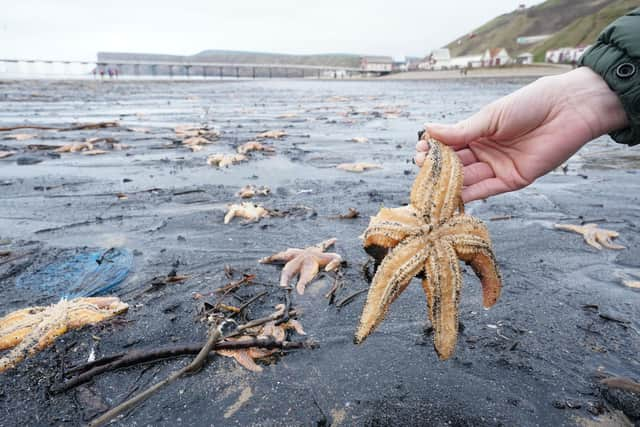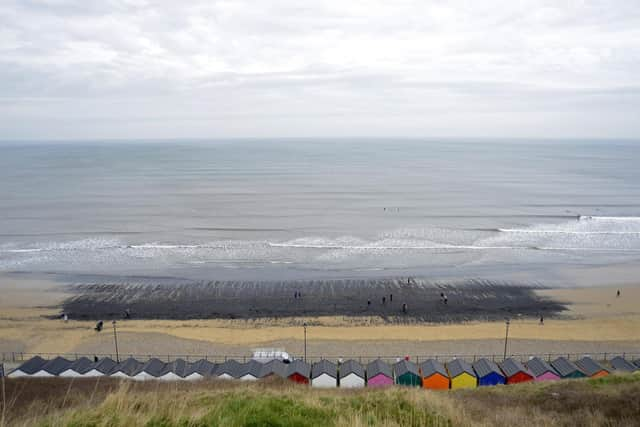Thousands of dead shellfish ‘litter’ Yorkshire beach as locals demand explanation
The beach in Saltburn-by-the-Sea was littered with mussels, but people have also found dead starfish, crabs and razor clams.
The Environment Agency said it is “normal at this time of year” and high tides and recent stormy weather would “most likely be the cause”.
Advertisement
Hide AdAdvertisement
Hide AdHowever, concerned locals claim dead sea creatures have been washing ashore on a regular basis, between Hartlepool and Whitby, since the autumn of 2021, when thousands of crabs and lobsters died in mysterious circumstances.


Speaking earlier this week, Environment Secretary Therese Coffey said the Government will not conduct another investigation into the crustacean deaths but will “respond to reports of similar mortality events” by sending experts to take samples for testing.
But the Department for Environment Food and Rural Affairs (Defra) did not comment on the wash up in Saltburn.
Sally Bunce, from campaign group Reclaim Our Sea, said the beach in Saltburn is “littered with dead marine life”.
Advertisement
Hide AdAdvertisement
Hide Ad“We saw miles of dead mussels yesterday and today the same stretch is covered in dead starfish,” she added. “Seeing a starfish on the beach at one time was a real novelty.”


Dr Rodney Forster, a marine scientist at the University of Hull, said it is “quite common” for coal dust, mussels and starfish to be washed ashore in the North East after storms.
He said waves over 2.15 metres (7ft) in height were recorded just off the coast of Whitby between Sunday and Tuesday.
“As it dies down, the sea loses its energy and material gets deposited along the coastline,” he added.
Advertisement
Hide AdAdvertisement
Hide Ad“But in light of the crustacean die off, we just have to watch it quite carefully and see how it develops. If we see similar things happening in the next two or three weeks in calm conditions, there might be other causes.”
Fishermen and scientists from several universities claim the crustacean deaths were linked to an industrial chemical called pyridine, that was released by dredging done as part of the Government-backed Teeside Freeport project.
A recent review, conducted by a panel of Defra-appointed scientists, said it is “very unlikely” that dredging and toxic chemicals are to blame but it could not identify a single cause.
The panel found that an unknown disease or parasite is the most likely cause, but “no significant pathogens were identified” because full molecular screening was not conducted during Defra’s initial investigation.
Advertisement
Hide AdAdvertisement
Hide AdJoe Redfern, a marine biologist in Whitby, has urged the Government to reopen the investigation.
He said: “What they’re saying is they’re going to have to wait for all the crabs to come back to life and repopulate those areas and then die again before they’re going to be able to come and have a look. It's just ridiculous.”
Simon Clarke, Conservative MP for Middlesbrough South and East Cleveland, said independent scientists have clearly stated the crustacean deaths “were in no way linked to human activity”.
“What is happening, which I regret bitterly, is that a tiny number of people are seizing upon every dead creature washed up by spring tides and claiming it is an ‘ecocide’,” he said. “It is not true, it is hugely damaging to our local economy and it should stop now.”
The latest phase of dredging in the River Tees began earlier this year, and another 800,000 cubic metres of material is due to be removed and dumped several miles offshore.